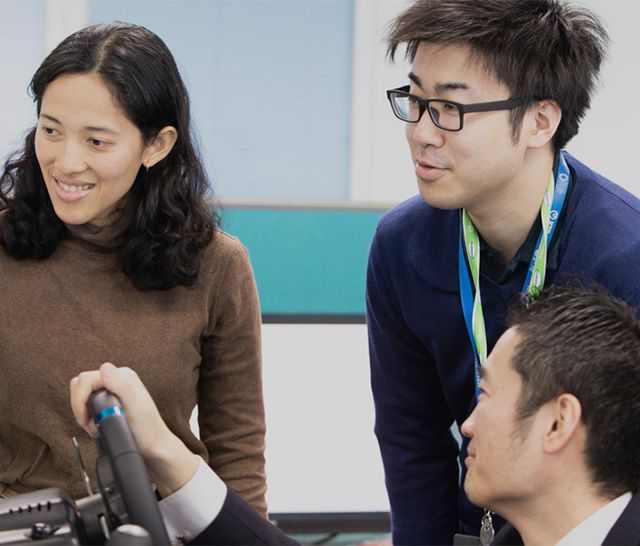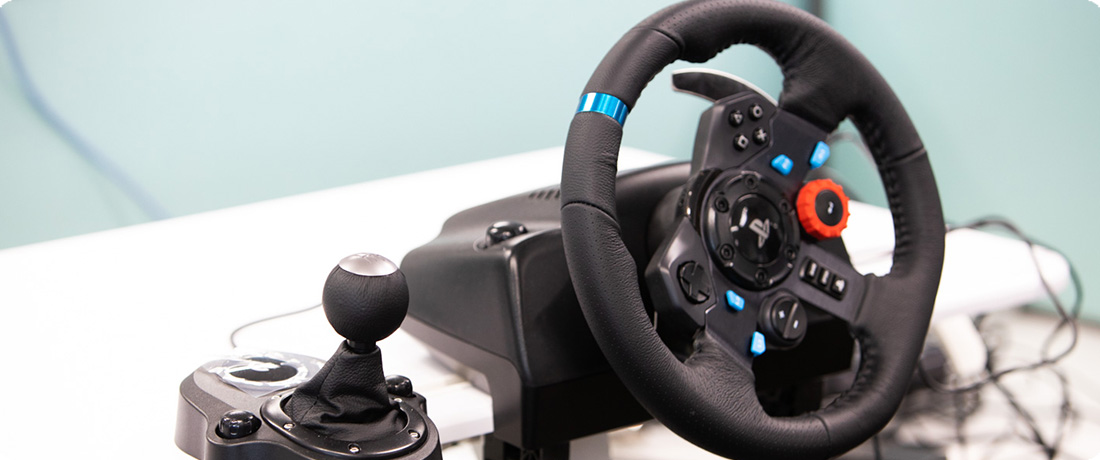

Towards developing
the automobile of the future
In the age of IoT, all things will be connected to the network, and automobiles will be no exception. In the coming era, all automobiles around the world will become connected cars for safer driving and more comfortable travel. In anticipation of such an era, NTT is conducting research to realize more stable automobile communications. One of the researchers at NTT Laboratories is aiming to contribute to the transportation infrastructure of the future in her own unique style.
Fake it until you make it !
There is a saying that Andalini Lidwina, a native of Indonesia who studied at a graduate school in Japan and is currently conducting research on connected cars at NTT, holds dear.
Fake it until you make it !
In Japanese, it means something like "pretend you can do it until you can do it!” This proverb expresses her attitude toward her research, which is to keep going even when she hits a wall.
“In research, you will encounter things that you don't understand or don't know, but it is important to proceed with your research while "pretending to understand (or able to understand)." Even if you don't understand something now, your knowledge and perspective will expand as you study to understand it, and you will surely come to understand it someday. I always approach my research with such a spirit in order to produce results that can contribute to society."
She is currently conducting research and development on communication and computing infrastructures for connected cars. Among the various communication infrastructures such as LTE, 5G, and WLAN, what form of infrastructure is most suitable and reliable for automobiles, and what components should the core network consist of? Or what kind of equipment should be used for edge computing to enable low latency processing, and what specifications should be used to configure it? These seems to be no end to the things that need to be considered to keep the routing part of the connected car in balance. Millions of vehicles will become connected to the network in the future, creating new values for the transportation infrastructure. She is conducting research to determine how to reduce the load on each individual vehicle in the midst of these developments.

More for society than for NTT
Connected cars will be an important device to support the transportation infrastructure of the future. By connecting to the Internet and processing a variety of information while driving, the connected car will bring new value to the automobile, beyond its conventional value as a means of transportation. In order to achieve this, it will be necessary to make the server function and applications run with as little load as possible on the car.
“The question is, which of the multiple applications is best suited for this purpose? I am studying the algorithms of these applications from various angles while also determining their compatibility with devices and communication formats.” Andalini says that since her research is related to automobiles, she has many contacts outside the NTT Group from automobile manufacturers and various vendors. She says she keeps the following points in mind when dealing with people from outside NTT.
“In studying applications, it is sometimes necessary to recognize the superiority of methods other than those NTT has developed. At such times, what I think of is that I am doing my research 'for the benefit of society rather than for NTT.'”
She says she enjoys having discussions with her team members and being exposed to various technologies to be able to produce results that will contribute to society in the future. She is now working hard every day to develop technologies that will become the infrastructure of not only Japan, but also the world.

I have my own style.
I had been conducting research on medical sensors until graduate school, so research on connected cars was a new challenge for me. Since I joined NTT, an institute conducting research covering a wide range of fields, I felt a desire to challenge myself to carry out research on a large scale while making use of my previous experience. I find great fulfillment in engaging in research on the future transportation infrastructure, a field that covers a wide scope.
I also think that the research style at NTT Laboratories matches my own research style. Since I am a foreigner, I may be a minority within NTT Laboratories. However, since each individual's way of thinking is respected here, being a minority is not a negative thing, and no one cares about my nationality or gender. Of course, I have my own style, so even if we come up with the same idea, the way I communicate those ideas may differ from how Japanese do it. I am the type of person who speaks my mind without hesitation, but Japanese people tend to communicate with more reserve. However, I feel that here, there is so much respect for the individual that such differences do not bother me at all, and I feel that the atmosphere is very suitable for me.
On the other hand, my being a minority can be an advantage for the team. For example, when I research something, I often conduct my search in English and refer to papers in English, while my Japanese colleagues often refer to papers in Japanese. This gives us a broader perspective as a team because we all bring in different points of view. I would like to continue to create future technologies to build a safe, secure, and convenient transportation infrastructure by making the most of my own unique research style, as well as that of each team member.


- Human Informatics Laboratories. Andalini Lidwina Joined the company in 2016
- At home she speaks English with her husband, and at work she speaks mainly Japanese. Andalini is multilingual, fluent in her native language, of course. Her colleagues call her by the nickname "Lilin-san." She has the potential to achieve the future she wants to create. She feels strongly about the possibilities of her current research environment and is giving it her all in her research.
※The names of research institutes and affiliate organizations of employees in the article are current at the time of the interview. Some may be old names of research institutes.


